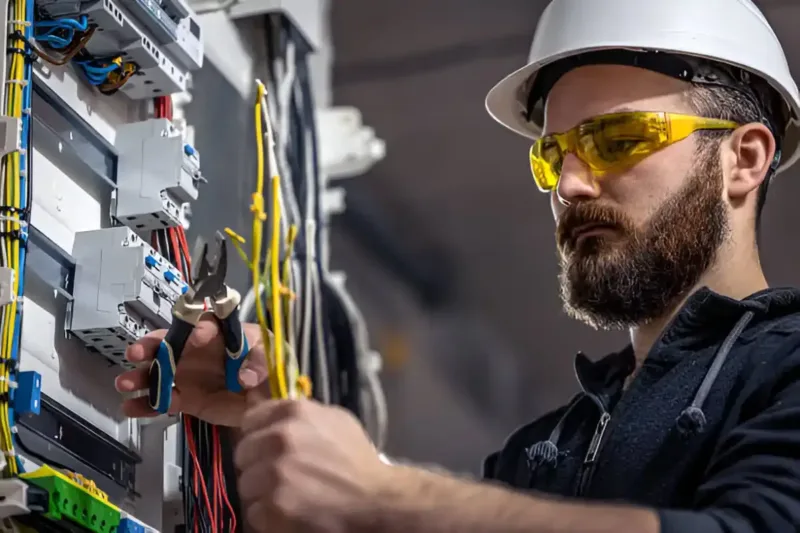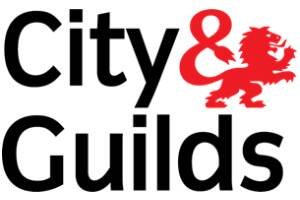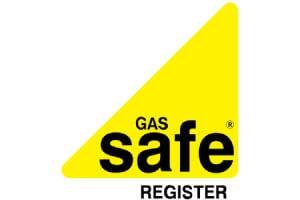
Fuse box installation is an essential procedure that ensures the safety and efficiency of a building’s electrical network. As the primary safeguard against potential electrical fires and other hazards, understanding the different types of fuse boxes—such as cartridge and circuit breaker panels—and their respective advantages is crucial. Moreover, recognizing the signs that may necessitate a new installation, such as frequent fuse blowouts or visible damage, is vital for maintaining an optimal electrical system. To fully comprehend the complexities and necessary standards involved in the installation process, it is important to explore further into the specifics and guidelines that govern this critical task.
Key Takeaways
- Fuse boxes are central hubs for a building’s electrical system, housing fuses or circuit breakers to prevent overcurrents.
- Signs for needing a new installation include frequent fuse blows, unusual noises, and burn marks.
- Installation must comply with electrical safety standards, including BS 7671, to ensure protection against fire and electric shock.
- The installation process involves site preparation, mounting, wiring connection, testing, and a final compliance inspection.
- Professional installation is crucial for adherence to local building codes and ensuring system safety and efficiency.
What Is a Fuse Box and Why Is It Important?
A fuse box, serving as the central hub of a building’s electrical system, plays a critical role in ensuring electrical safety and functionality. This device, integral to the distribution of electricity, houses the fuses or circuit breakers which protect the electrical circuits from overcurrents and short circuits. Proper installation and maintenance are paramount to prevent potential electrical fires and ensure continuous power supply.
When considering a new fuse box installation, the choice of a skilled fuse box installer near you is crucial. In urban areas such as London, the fuse box installation cost can vary widely based on factors like the complexity of your electrical system and the specifications of the fuse box required.
It is advisable to seek multiple quotes to find a cost-effective and proficient service. Professionals in this field will assess your building’s electrical demands, recommend the appropriate type of fuse box, and ensure compliance with local electrical standards and regulations.
Opting for a certified and experienced installer guarantees that the installation will enhance the safety and efficiency of your electrical system, thereby safeguarding your property and its occupants.
Signs You Need a New Fuse Box Installation
Recognizing when your building requires a new fuse box installation is key to maintaining electrical safety and efficiency. Several clear indicators suggest the necessity for an upgrade or replacement. These signs should not be ignored as they directly impact the operational integrity and safety of your electrical system.
| Sign | Implication | Action Required |
|---|---|---|
| Frequent Fuse Blows | Overload or fault in the circuit | Inspect circuits and consider upgrade |
| Unusual Noises (buzzing, humming) | Loose or faulty wirings or components | Immediate inspection and correction |
| Burn Marks or Smell | Potential short circuits | Urgent safety assessment |
| Inability to Hold Modern Loads | Inadequate capacity for current demands | Upgrade to a modern system |
Each of these signs not only affects the efficiency of your electrical system but also poses significant risks. Frequent fuse blows often indicate that the existing box is unable to handle the electrical load, necessitating an upgrade to accommodate modern power requirements. Similarly, unusual noises, burn marks, or any odor from the fuse box are red flags that require immediate professional attention to prevent potential hazards. Upgrading your fuse box can substantially enhance electrical distribution and safety. Ensure that any intervention is executed by a qualified electrician to maintain system integrity and compliance with local electrical codes.
Types of Fuse Boxes: Which One Do You Need?
Selecting the appropriate type of fuse box for your building is crucial for ensuring electrical safety and meeting power demands efficiently.
There are primarily two main categories of fuse boxes widely used in both residential and commercial settings: cartridge fuse boxes and circuit breaker panels.
Cartridge fuse boxes are an older style, typically found in buildings constructed before the 1960s. They utilize cartridge fuses that need to be replaced after a blowout. This type requires more maintenance and is less convenient compared to modern systems, but it can still be suitable for buildings with lower electrical requirements and those preserving historical authenticity.
Circuit breaker panels, on the other hand, are more contemporary and user-friendly. They feature switches that trip in the event of an overload, which can be easily reset without needing replacement. This type is highly recommended for most modern applications due to its ease of use, enhanced safety features, and capability to handle higher power loads.
When choosing a Fuse Box Installation, consider factors such as the electrical load of your building, the complexity of your electrical system, and compliance with local electrical codes.
Consulting with a certified electrician to assess these factors can guide you to the most suitable choice for your infrastructure.
The Fuse Box Installation Process Explained
Once the appropriate type of fuse box has been determined for your building, the next step is to understand the installation process. This procedure, crucial for both safety and functionality, involves several key steps that must be meticulously followed to ensure proper setup and operation.
| Step | Description | Emotional Impact |
|---|---|---|
| Site Preparation | Clear the area, ensure structural integrity. | Creates a sense of readiness and anticipation. |
| Mounting | Securely mount the fuse box to the wall. | Instills confidence in stability. |
| Wiring Connection | Connect wires according to the circuit diagram. | Critical for safety and reliability. |
| Testing | Perform initial tests to check for any faults. | Provides reassurance of proper installation. |
| Final Inspection | Review installation, ensure compliance with codes. | Affirms the commitment to quality and safety. |
First, the installation site must be prepared by clearing any obstructions and ensuring that the area is structurally sound. Next, the fuse box should be securely mounted to the wall, which requires precise measurements and sturdy materials to support the weight and ensure easy access for future maintenance. Wiring connections are then made according to detailed circuit diagrams, emphasizing accuracy to prevent electrical hazards.
After connecting, a series of tests are performed to identify and rectify any faults, which is crucial for operational reliability. Finally, a thorough inspection confirms that the installation adheres to all safety standards and is ready for use. This methodical approach not only secures the electrical system but also builds a foundation of safety and efficiency in your building’s electrical framework.
Compliance with Electrical Safety Standards (BS 7671)
Adhering to Electrical Safety Standards (BS 7671) is pivotal when installing a fuse box, as these regulations are designed to ensure the safety and efficiency of electrical installations. The BS 7671, also known as the Wiring Regulations, sets forth comprehensive guidelines that cover the selection and erection of electrical equipment, protecting against both fire and electric shock.
It is essential for electrical professionals to familiarize themselves with the latest version of these standards to avoid non-compliance, which can lead to serious hazards. The regulations specify criteria for circuit design, including the calculation of load demands and the selection of appropriate fuse ratings to prevent overload.

Also detailed are the requirements for the placement of the fuse box, ensuring it is accessible yet protected from accidental contact. Earthing and bonding requirements are stringently outlined to facilitate fault current safely to the ground, reducing the risk of electric shock.
Furthermore, the BS 7671 includes provisions for periodic testing and inspection to verify that electrical systems remain in a safe, functional state over time. Compliance not only promotes safety but also ensures that the installation will pass inspections by regulatory authorities, avoiding legal and insurance complications.
Fuse Box Installation for Residential vs. Commercial Properties
When installing fuse boxes, the distinctions between residential and commercial properties must be carefully considered due to differing power requirements and usage patterns.
Residential installations typically involve lower capacity requirements, focusing on supporting everyday appliances and lighting. The fuse boxes used are often single-phase systems with a clear, straightforward design to accommodate standard household currents, typically around 100-200 amps.
In contrast, commercial properties demand a more robust setup due to the higher power consumption and more complex systems required for operations ranging from machinery to large HVAC systems.
These installations usually require three-phase systems to handle increased electrical loads efficiently and safely. Commercial fuse boxes are also designed to support a broader range of voltages and currents, commonly up to 400 amps or more, necessitating detailed planning and segmentation of circuits to ensure operational continuity and safety.
Both types of installations must comply with local electrical codes and standards, which define the minimum requirements for safety and functionality.
However, commercial setups often involve additional considerations such as emergency power capabilities, redundancy, and specialized circuit breakers that cater to specific machinery or operational needs.
Thus, the expertise of a qualified electrician with experience in commercial electrical systems is crucial.
Common Fuse Box Issues and How to Avoid Them
Common fuse box issues, such as circuit overloads, blown fuses, and intermittent power losses, often stem from improper installation or maintenance. These issues can significantly disrupt electrical system functionality and pose fire hazards. To avoid such complications, it is crucial to ensure that the installation adheres strictly to local electrical codes and standards.
Firstly, select the correct fuse box rating for the specific requirements of your property. Overloading a circuit by connecting too many devices can lead to frequent fuse blowouts and potential overheating. Therefore, balance the load appropriately and consider future expansions when planning circuit allocations.
Secondly, ensure high-quality wiring practices are employed. Connections should be secure and properly insulated to prevent any arcing or loose connections that could lead to power surges or outages. Regular inspections by qualified electricians can help identify and rectify such issues before they escalate.
Lastly, be vigilant about environmental factors such as moisture or dust that can affect the fuse box’s efficiency. Install the fuse box in a location that remains dry and clean, and use protective covers if necessary.
Adhering to these preventive measures will enhance longevity and reliability, reducing the likelihood of common fuse box issues.
Schedule Your Professional Fuse Box Installation Today
Ensuring your property’s electrical system operates safely and efficiently requires professional fuse box installation. This critical step not only guarantees adherence to local building codes but also ensures that your electrical infrastructure is optimized for both current and future needs.
When planning the installation, it is imperative to choose a certified electrician who specializes in residential or commercial electrical systems, depending on the nature of your property.
Begin by scheduling a consultation with a licensed electrical contractor. During this initial meeting, the electrician will assess your property’s electrical load, review the existing wiring, and determine the appropriate type of fuse box that meets the safety standards while supporting all your electrical requirements.
This assessment includes a detailed evaluation of amperage needs and potential expansion plans, ensuring that the new system can handle increased electrical demands without compromising safety.
Once the assessment is complete, the electrician will provide a detailed plan including a timeline and cost estimate. It is essential to discuss any specific concerns you might have, such as energy efficiency or system scalability.
Conclusion
In conclusion, the installation of a fuse box is a critical procedure that ensures the safety and efficiency of a building’s electrical system. Opting for professional installation guarantees adherence to electrical safety standards and correct sizing and settings, thus minimizing the risk of electrical failures. Whether for residential or commercial properties, understanding the importance of the correct type of fuse box and recognizing signs for replacement are fundamental for maintaining electrical integrity and safety.







